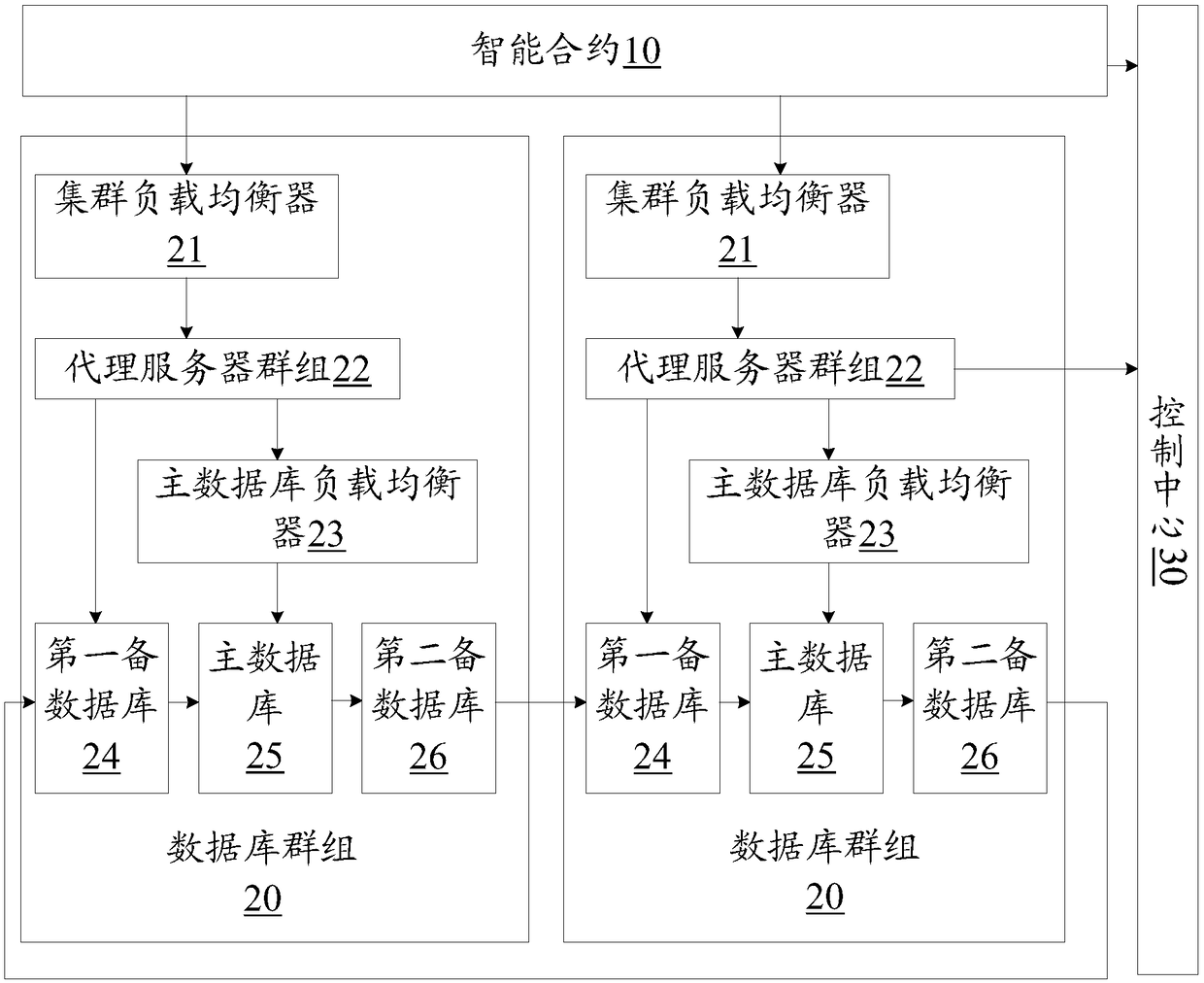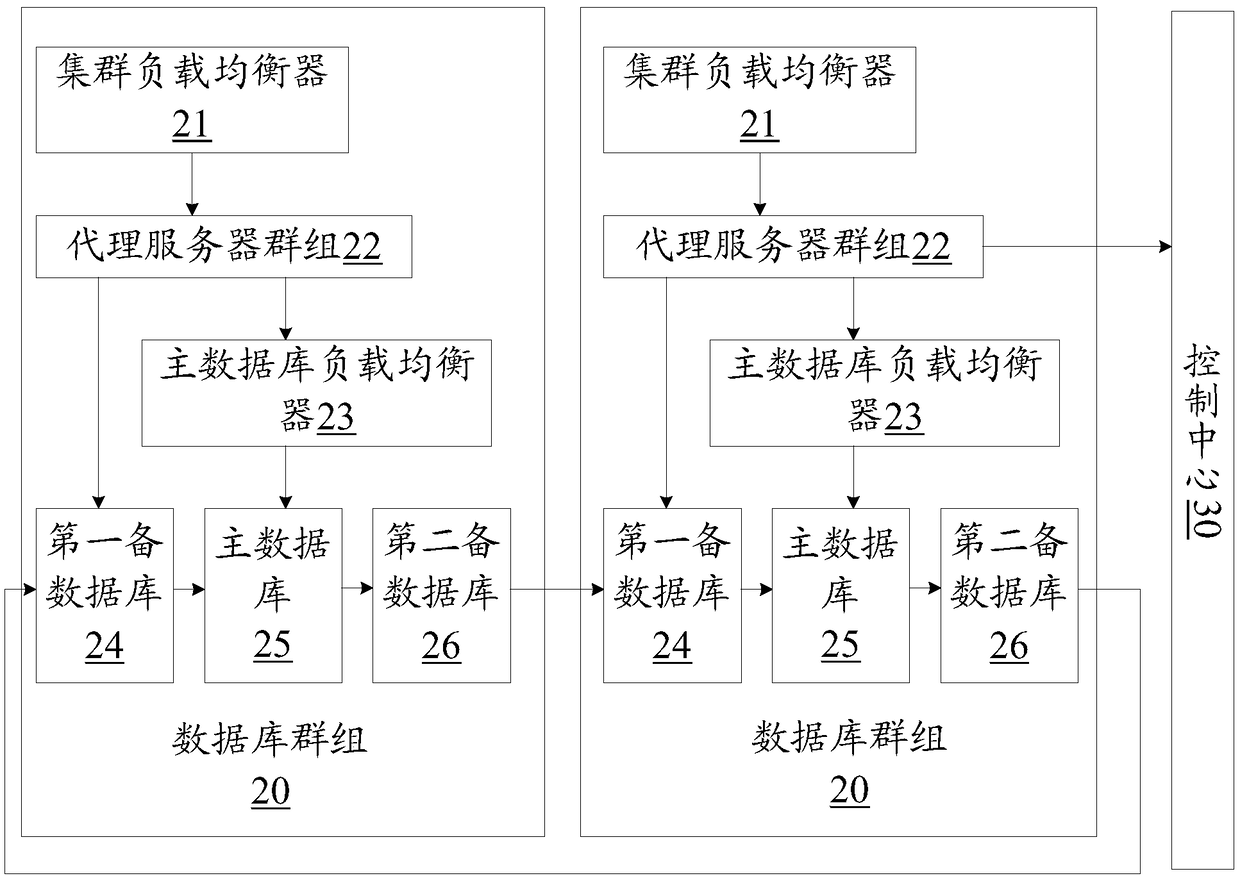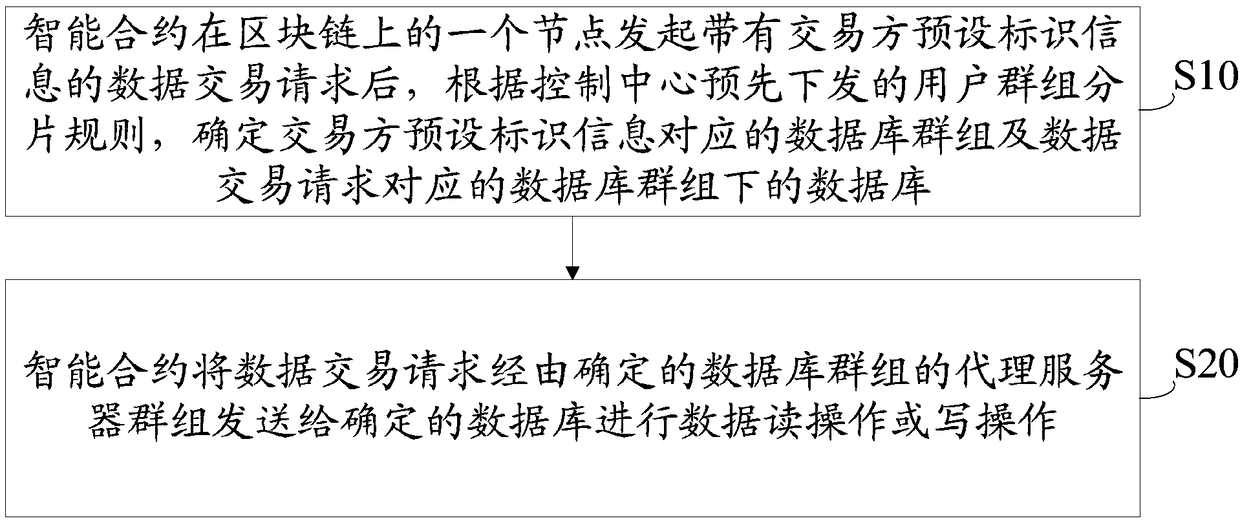Blockchain transaction processing auxiliary system and blockchain data processing system and method
A transaction processing and auxiliary system technology, applied in the blockchain field, can solve the problem that the transaction data reading operation of the blockchain system relies on smart contracts, etc., and achieve the effect of improving transaction processing efficiency
- Summary
- Abstract
- Description
- Claims
- Application Information
AI Technical Summary
Problems solved by technology
Method used
Image
Examples
Embodiment Construction
[0040] The principles and features of the present invention are described below in conjunction with the accompanying drawings, and the examples given are only used to explain the present invention, and are not intended to limit the scope of the present invention.
[0041] Such as figure 1 as shown, figure 1 It is a schematic diagram of the system architecture of the first embodiment of the blockchain data processing system of the present invention.
[0042] have to be aware of is, figure 1 Only two database groups 20 are shown in the figure, which does not mean that the number of database groups 20 is limited to two. The present invention does not limit the number of database groups 20. In addition, the proxy server group 22 may include multiple proxy servers (not shown in the figure).
[0043]In this embodiment, the blockchain data processing system includes a blockchain transaction processing auxiliary system and a smart contract 10, and the blockchain transaction process...
PUM
 Login to View More
Login to View More Abstract
Description
Claims
Application Information
 Login to View More
Login to View More - R&D
- Intellectual Property
- Life Sciences
- Materials
- Tech Scout
- Unparalleled Data Quality
- Higher Quality Content
- 60% Fewer Hallucinations
Browse by: Latest US Patents, China's latest patents, Technical Efficacy Thesaurus, Application Domain, Technology Topic, Popular Technical Reports.
© 2025 PatSnap. All rights reserved.Legal|Privacy policy|Modern Slavery Act Transparency Statement|Sitemap|About US| Contact US: help@patsnap.com



